Tom's Hardware Verdict
If you want 10Gb Ethernet, this is a great board. Otherwise, the X399 Taichi is cheaper performs just as well whether you're a gamer or a professional.
Pros
- +
On-board 10Gb networking
- +
Nearly-identical performance to the Taichi in all respects
Cons
- -
Missing some “gaming” features
- -
Tough value proposition for gamers
Why you can trust Tom's Hardware
Features & Layout
The ASRock Fatal1ty X399 Professional Gaming motherboard (priced around $390) performs just as well as the company's X399 Taichi, but has the added benefit of the 10Gb network controller. This board has some deficiencies from a gamer’s perspective, but would work well for a system that calls for 10Gb throughput and utilization of all the PCIe slots (something most boards can’t handle).
AMD successfully stole the tech communities’ attention at Computex 2018 with the announcement of the Threadripper 2000 series processors. And since the August release of the 32-core behemoth flagship chip, there has been plenty of positive press for the HEDT underdog. In our comparison against the Skylake-X class processors, AMD’s latest ecosystem only lags the Blue Team on gaming performance and motherboard selection, while generally costing a whole lot less per core and thread.
Specifications
| Socket | TR4 |
| Chipset | AMD X399 |
| Form Factor | ATX |
| Voltage Regulator | 8+3 Phases |
| Video Ports | ✗ |
| USB Ports | 10Gbps:(1) Type A, (1) Type C5Gb/s: (8) Type A |
| Network Jacks | (1) 10Gb Ethernet(2) Gigabit Ethernet |
| Audio Jacks | (5) Analog, (1) Digital |
| Legacy Ports/Jacks | (1) PS/2 |
| Other Ports/Jack | (2) SMA Antenna, (1) BIOS Flashback |
| PCIe x16 | (4) v3.0 (x16/x8/x16/x8) |
| PCIe x8 | ✗ |
| PCIe x4 | ✗ |
| PCIe x1 | (1) v2.0 |
| CrossFire/SLI | 4x / 4x |
| DIMM slots | (8) DDR4 |
| M.2 slots | (2) PCIe v3 x4 / SATA3 42/60/80mm(1) PCIe v3 x4 / SATA3 30/42/60/80mm |
| U.2 Ports | (1) PCIe v3 x4, SFF-8639 (disable M2_1) |
| SATA Ports | (8) 6Gb/s |
| USB Headers | (2) 5Gbps(2) USB2.0 |
| Fan Headers | (5) 4-pin |
| Legacy Interfaces | (1) COM |
| Other Interfaces | (2) RGB-LED, (2) Front panel Audio |
| Diagnostics Panel | Numeric |
| Internal Button/Switch | CMOS Clear, Power, Reset, Xtreme OC |
| SATA Controllers | Integrated (0/1/10) |
| Ethernet Controllers | (1) Aquantia® AQC107(2) Intel® I211AT |
| Wi-Fi / Bluetooth | Intel® 802.11ac WiFi ModuleBluetooth 4.2 / 3.0 |
| USB Controllers | ✗ |
| HD Audio Codec | ALC1220 |
| DDL/DTS Connect | ✗ / ✗ |
| Warranty | 3 Years |
Rather than cook up a new chipset like the Ryzen 2000 series launches, AMD chose to provide a better upgrade path for users in the field who need the extra cores or features of the 2000 series Threadrippers by keeping the existing X399 chipset and socket in place. For the most part, older vintages of X399 boards were overbuilt for the first-generation parts, but AMD officially supports only stock frequencies for its highest-end WX series processors with some older boards.

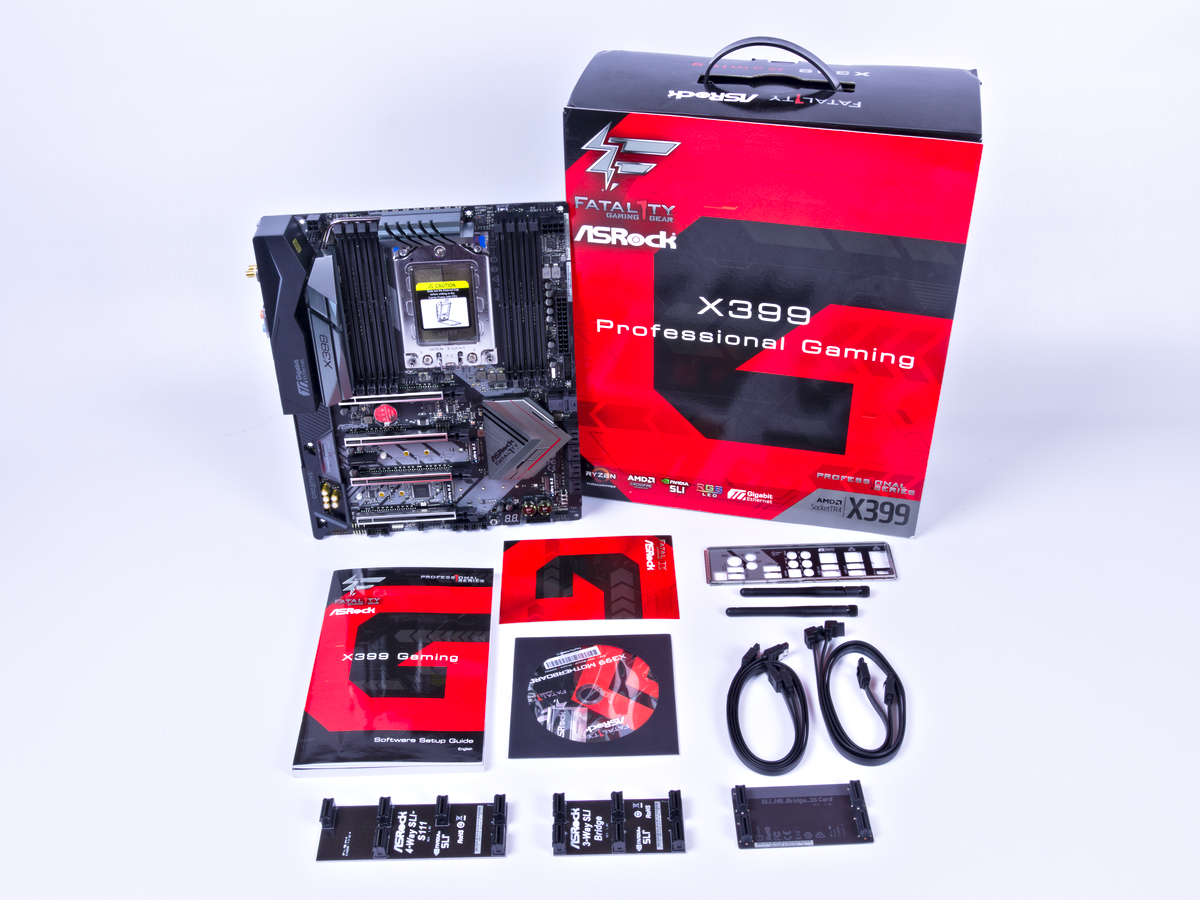
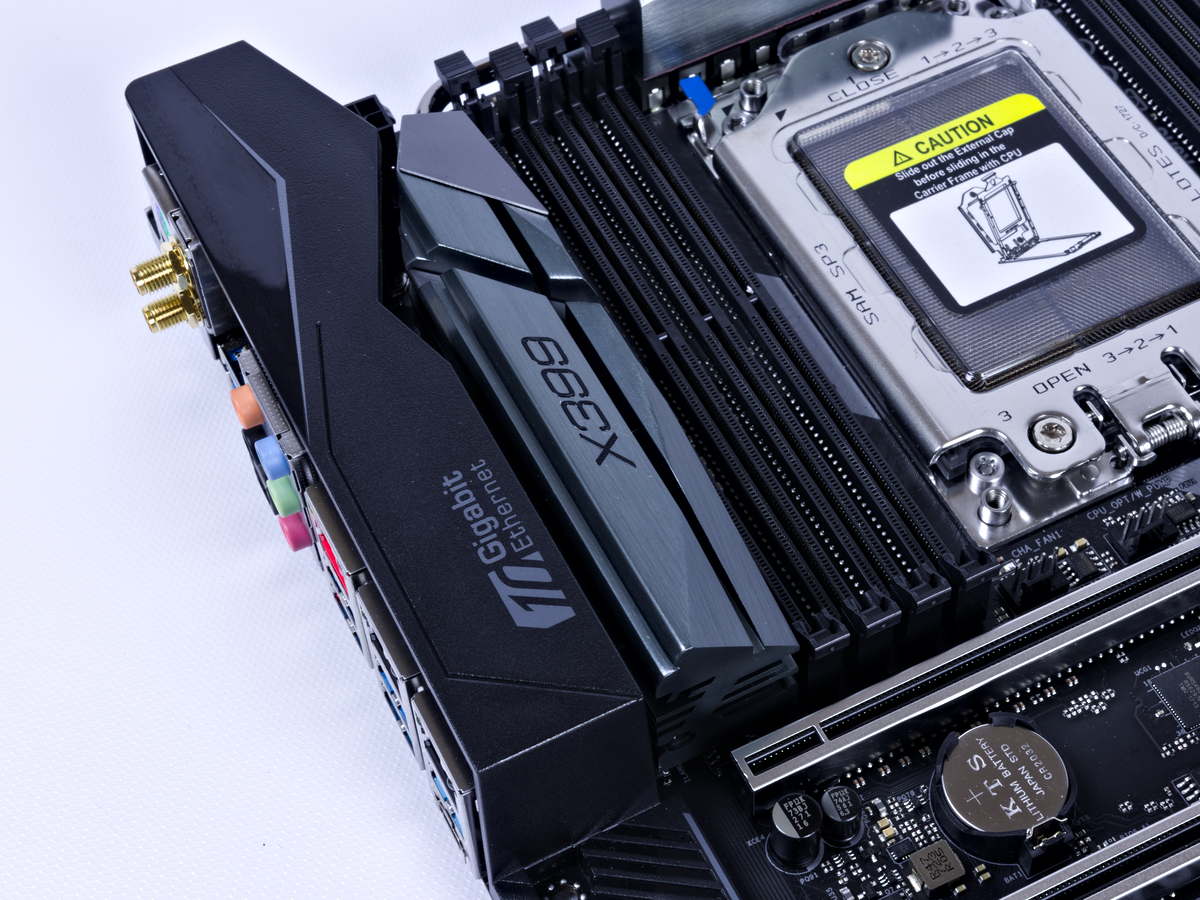
The ASRock Fatal1ty X399 Professional Gaming board shares several similarities to its Taichi brother. In fact, if the facade and aesthetics are removed, both the Taichi and Professional Gaming boards share nearly identical design and component placement across the board. Plastic IO shields, VReg heatsinks and header locations and styles are identical. In short, the only substantial difference between these boards is the inclusion of the Aquantia 10Gb network controller and the populated COM port header on the Professional Gaming board.
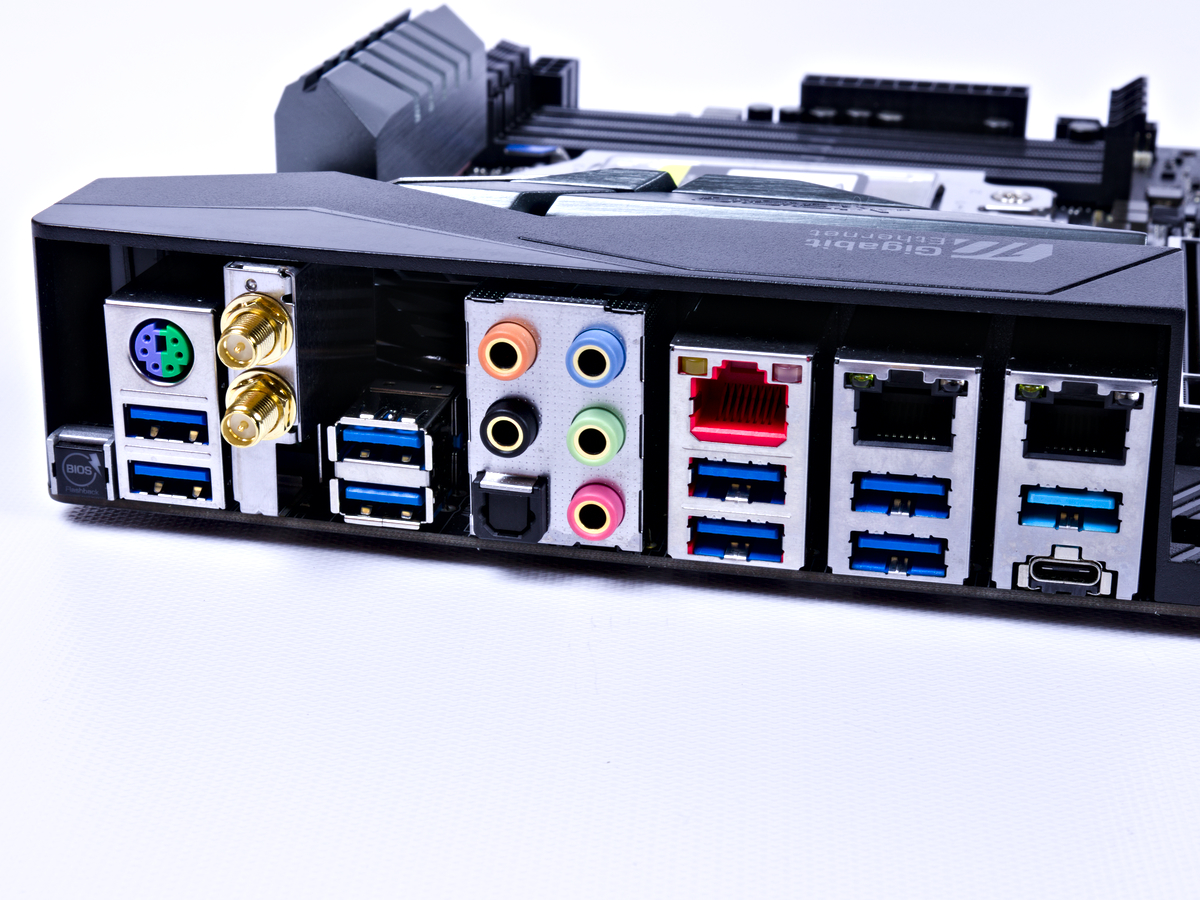
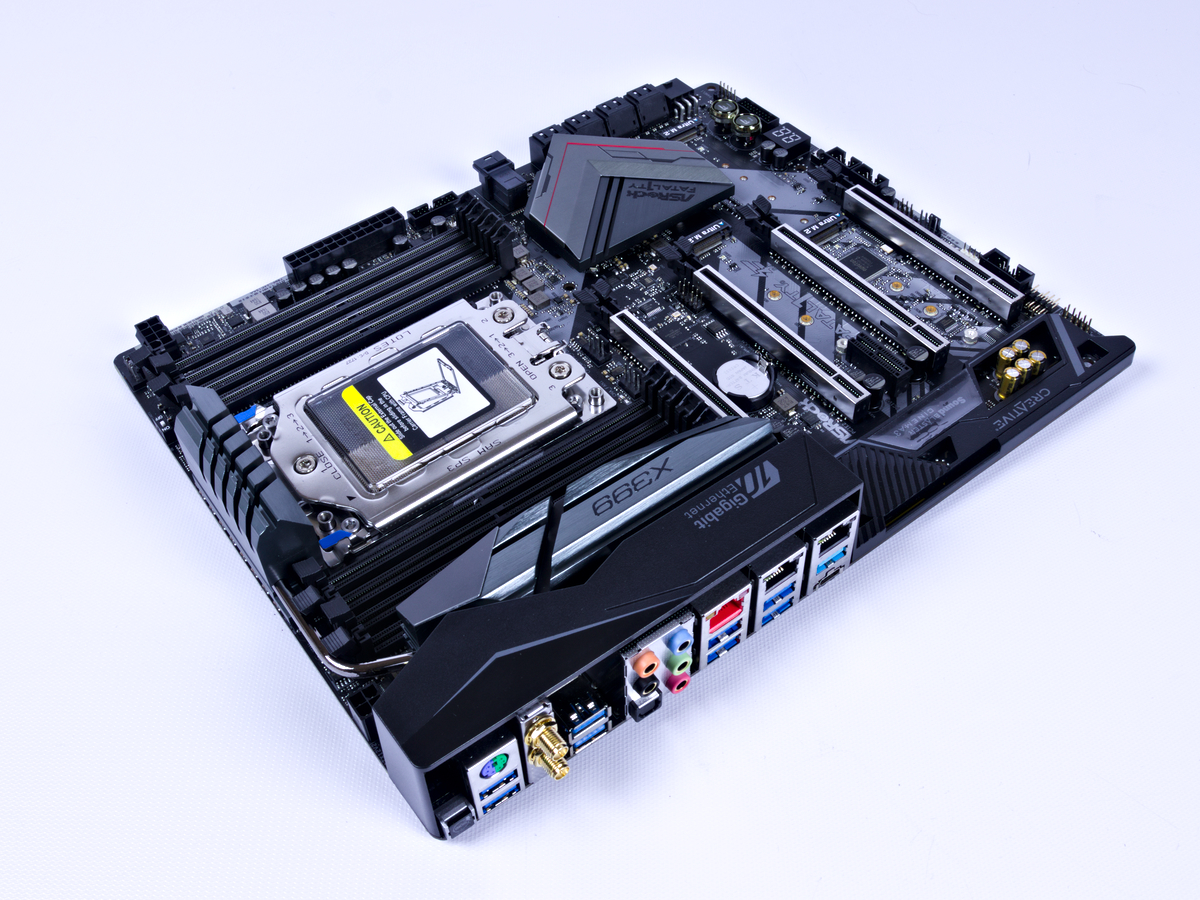

But enough about the Taichi; let’s take a close look at the Fatal1ty board. The ASRock Fatal1ty X399 Professional Gaming provides 10 USB ports through the back panel, which are wired out for eight USB3.0, one Type-A and one Type-C USB 10Gb/s. Five gold-plated analog audio jacks and a SPDIF port enable audio through the Realtek ALC1220 codec. And the board is bundled with the Sound Blaster Cinema 3 suite to leverage Creative’s software stack in conjunction with the ASRock’s audio circuitry and design.
Wireless network connectivity is granted using an Intel AC8265 2x2 802.11ac controller, and standard Ethernet is provided by two tried-and-true Intel I211AT gigabit controllers. The third RJ-45 connector is connected to the star of the show: the Aquantia AQC107 controller which enables 10GBASE-T connections (more on that later). Lastly, what would a Fatal1ty board be without support for a PS/2 port or the inclusion of BIOS Flashback on the back panel?
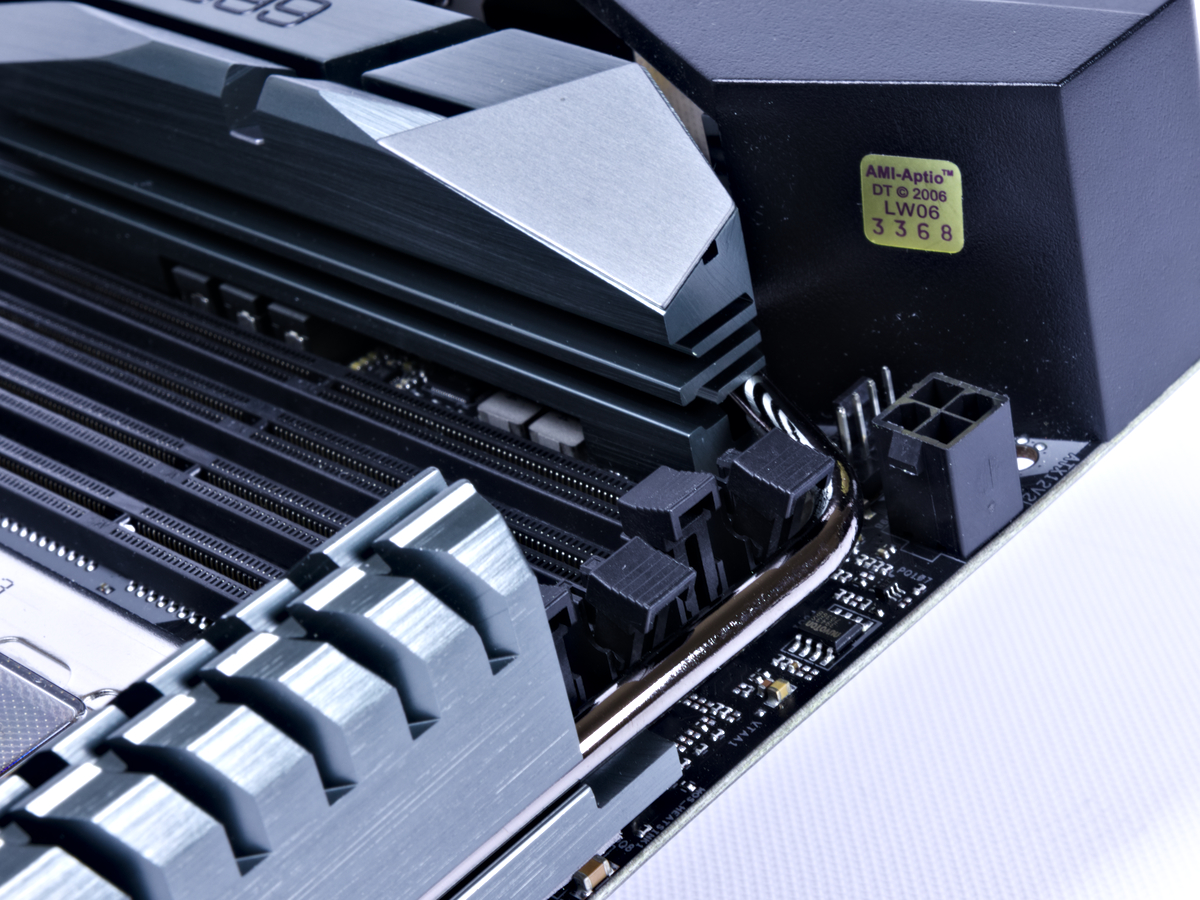
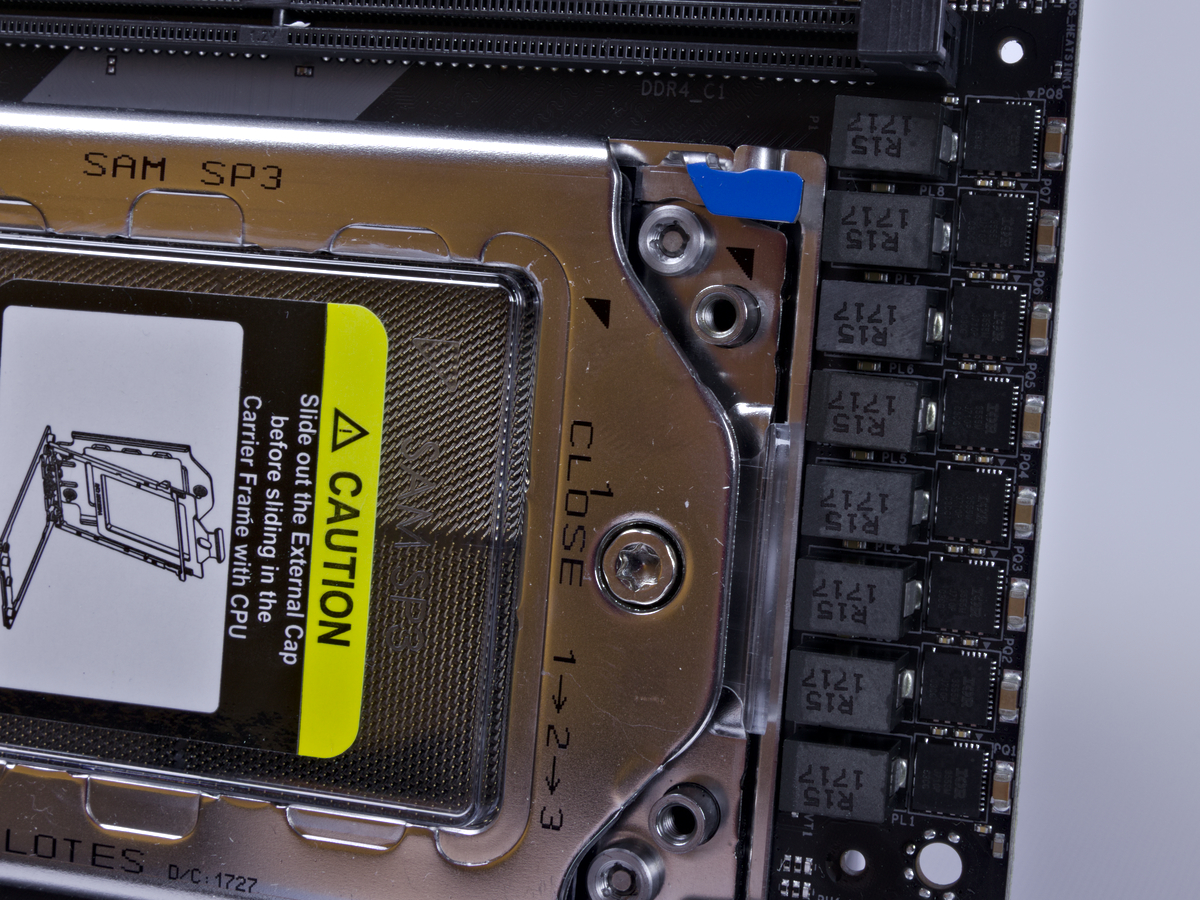
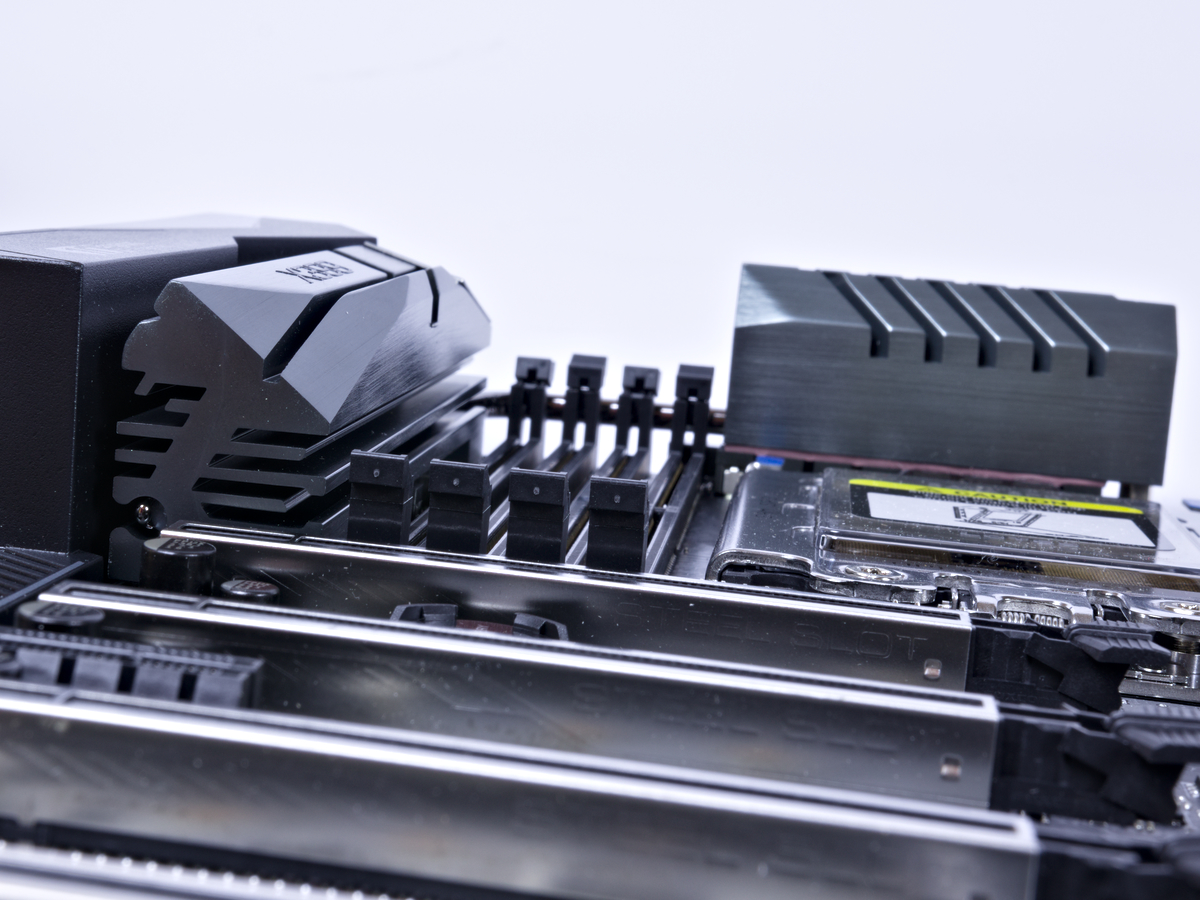
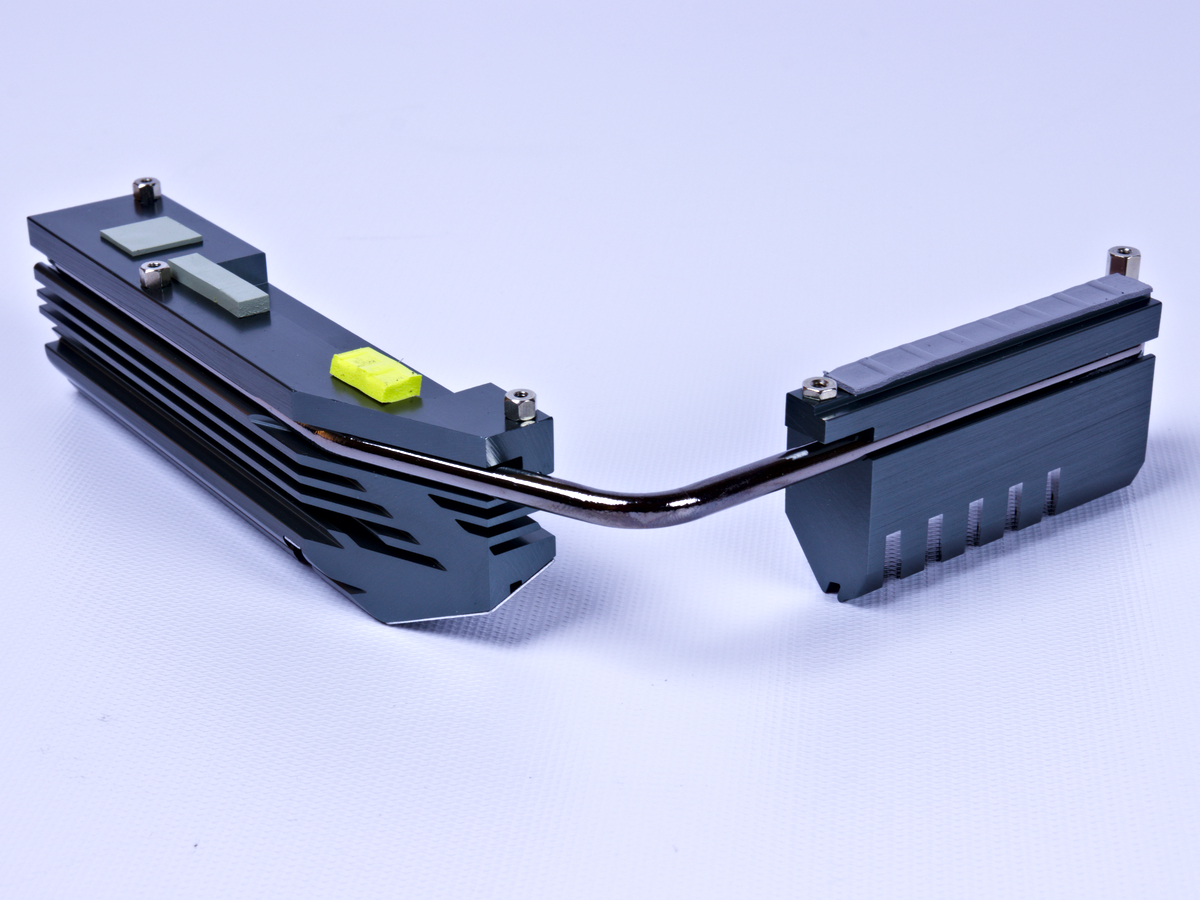
Moving clockwise across the planar, the top-left quadrant of the board houses the first of five four-pin PWM fan headers and a 4-pin EPS12V power connector. This board utilizes both the 4-pin and 8-pin to power its 8+3 phase regulator topology, with IR PWM controller and Dr. MOS integrated MOSFET drivers. Cooling this Vreg design is the same heatsinks we see on the X399 Taichi, which prove to be sufficient for the lower wattage Threadrippers: Additional airflow is needed when using CPU water blocks for an overclocked WX processor.
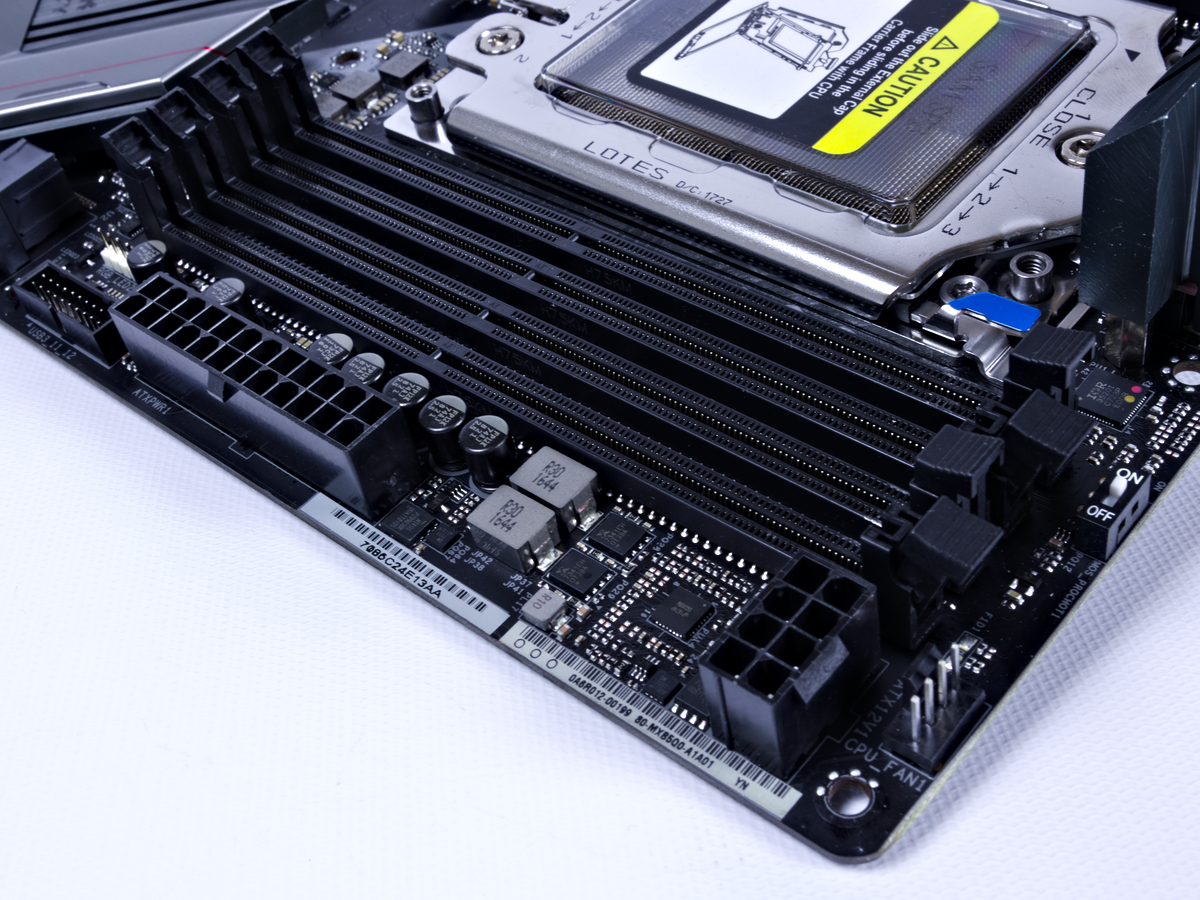
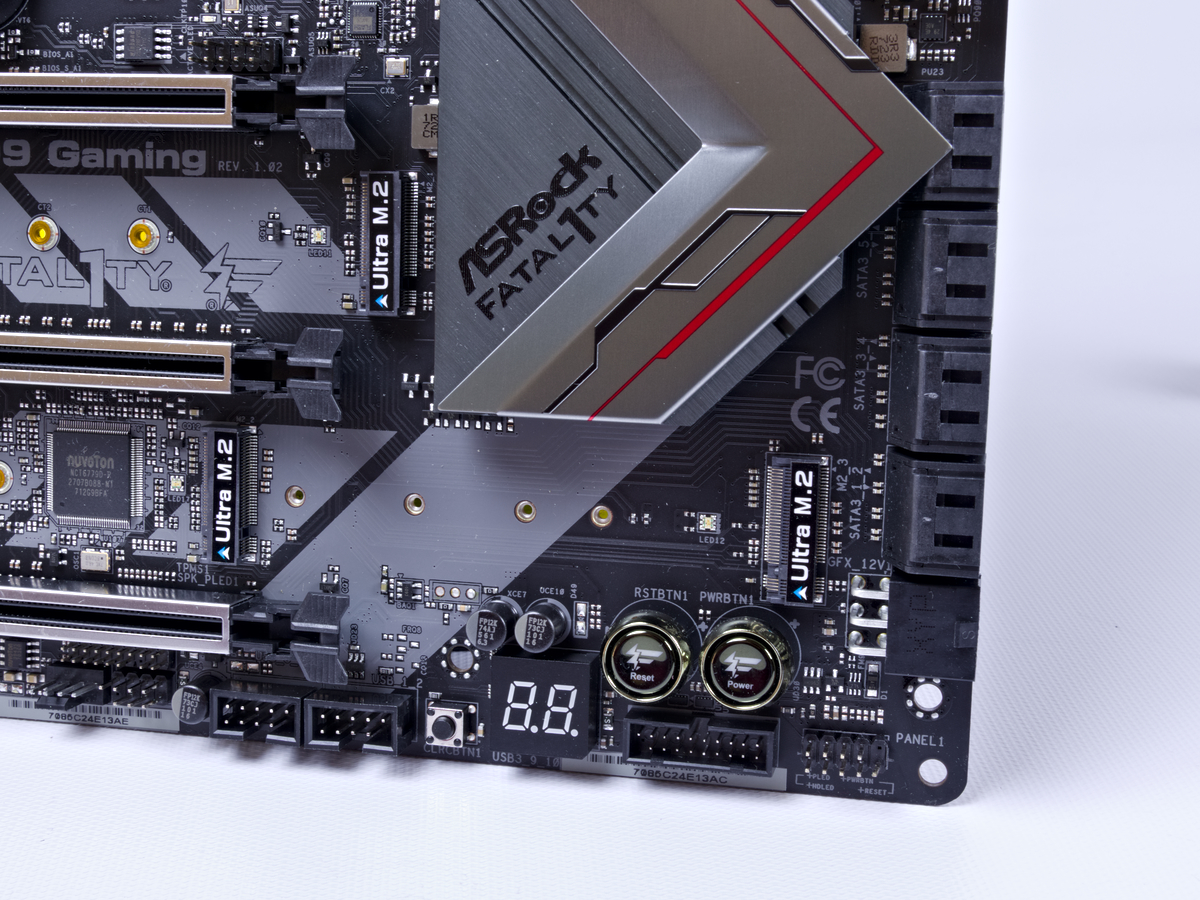
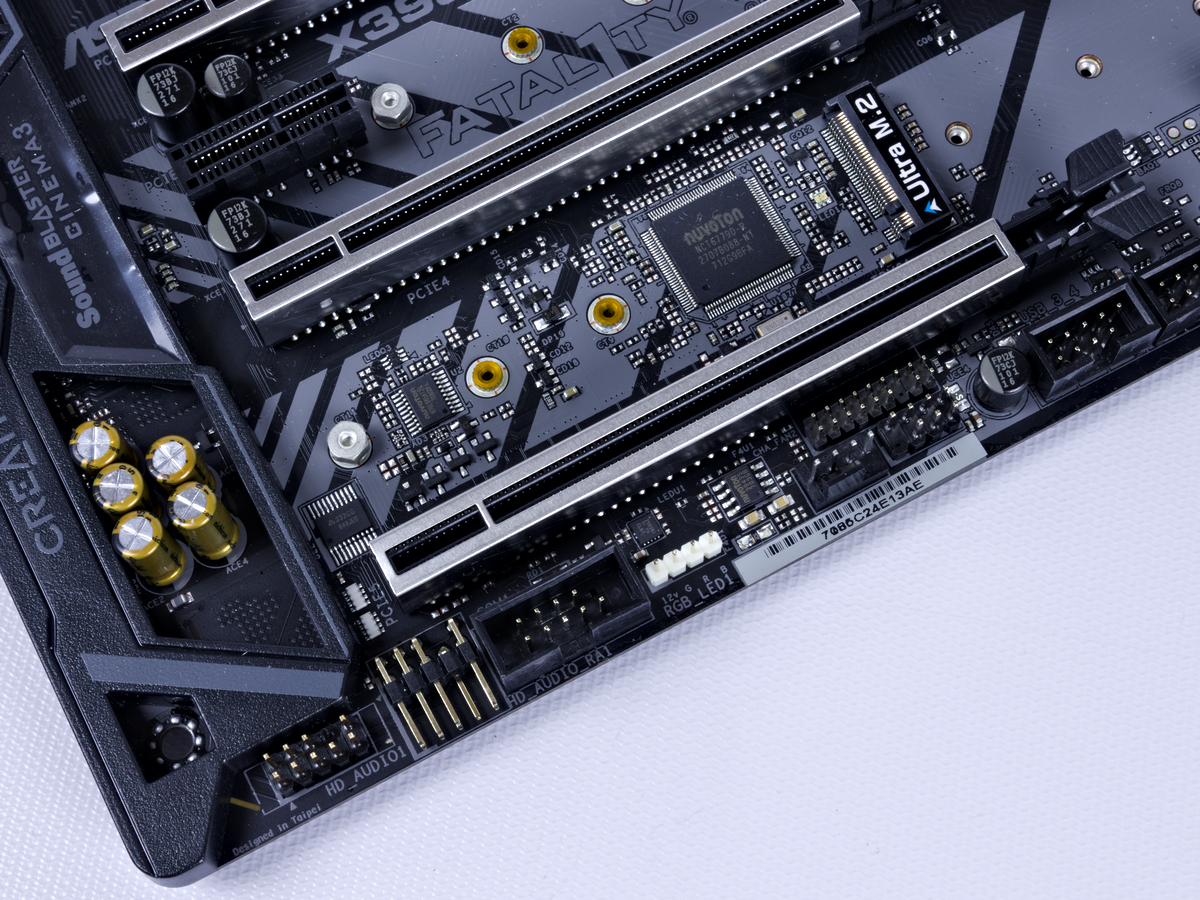
Quad-channel DDR4 is supported by default on Threadripper and this board provides support for ECC non-buffered DIMM modules. The right edge of the board houses the 24-pin ATX, 6-pin PCIe supplement power, and the first USB3.0 header. The 6-pin PCIe connector is required for multi-GPU configurations, and fortunately the angled connector helps keep cable management a little bit cleaner. Skipping storage ports for now, the bottom side contains the classic format of front panel headers, two USB 2.0, two 4-pin fans, front-panel audio, and COM port headers. For the overclockers among us, two 7-segment numeric debug LEDs provide Dr. Debug post codes, alongside power and reset buttons.
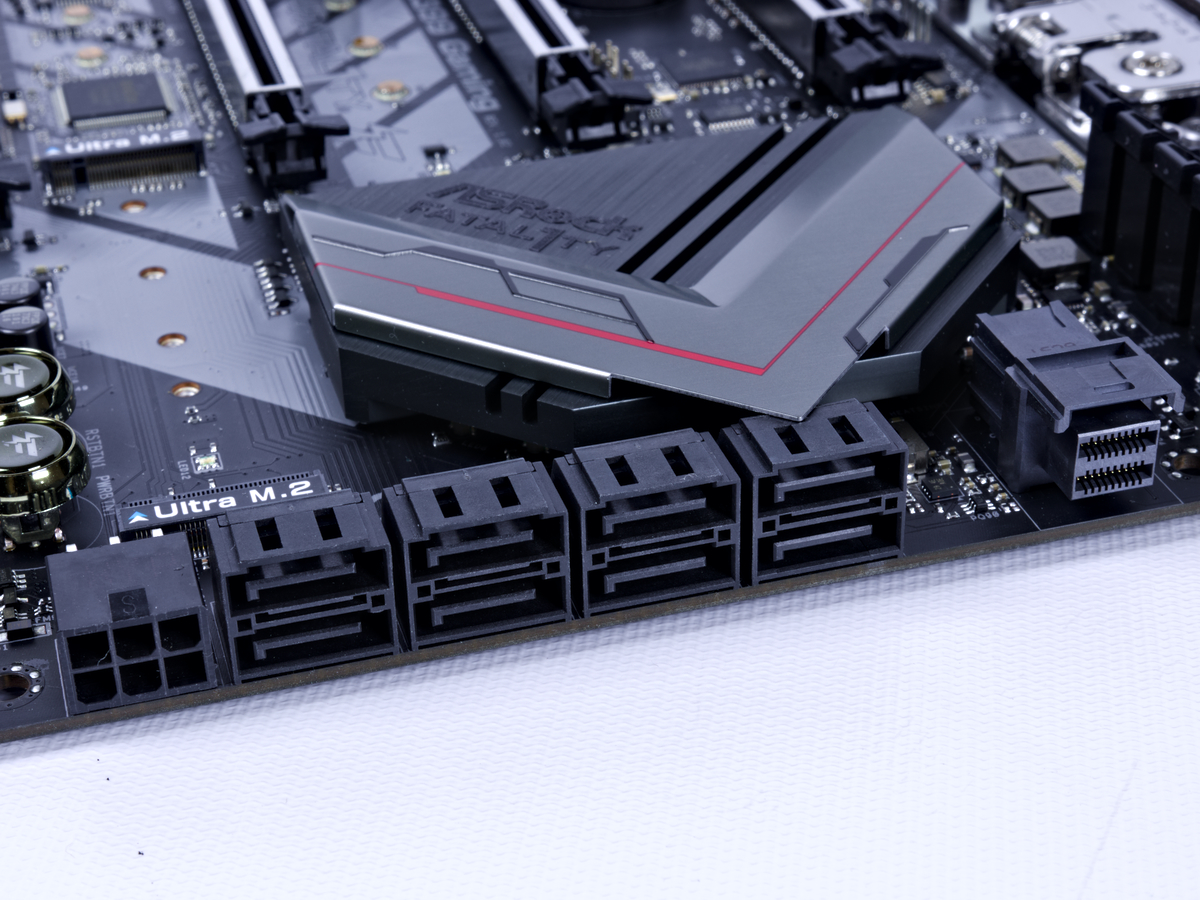
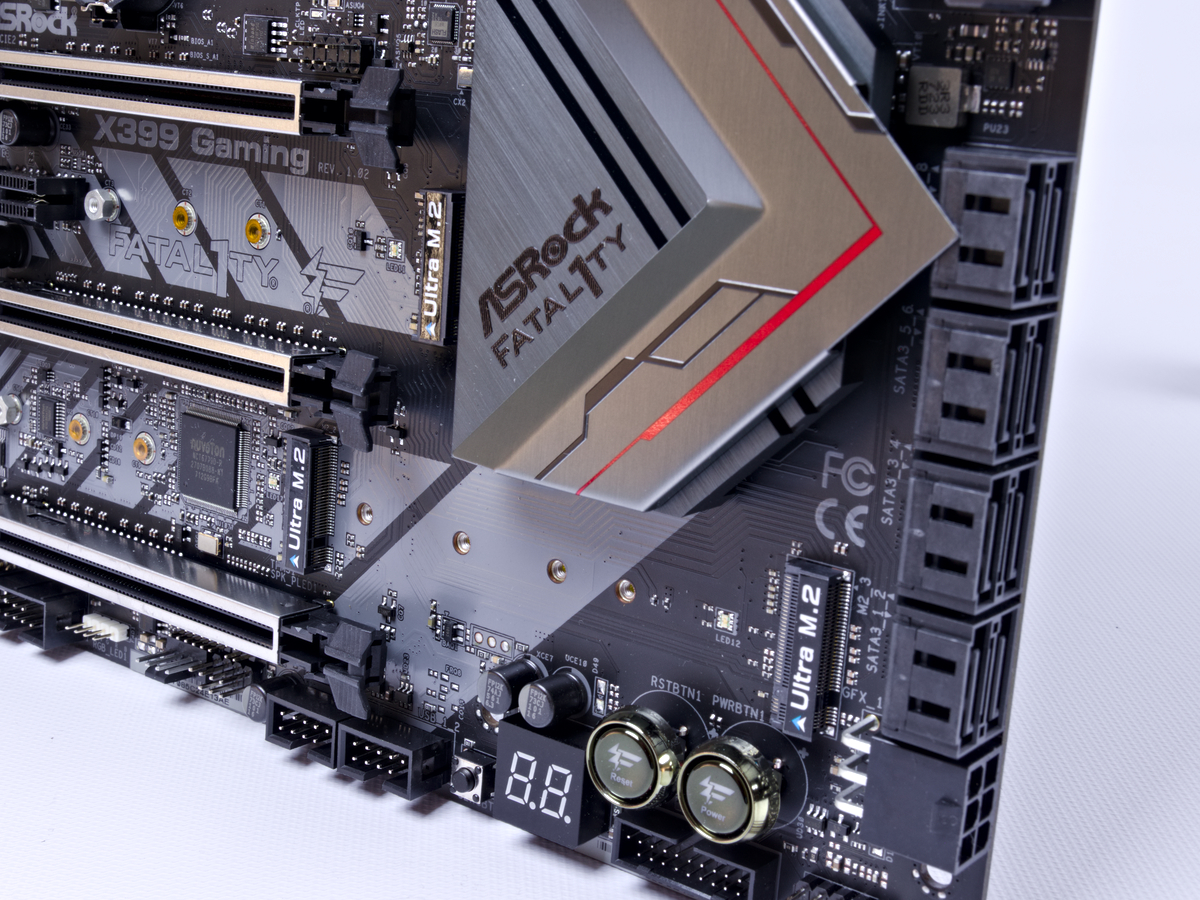
Storage on Threadripper comes as no surprise. Lots of PCIe lanes means more connections and options for system builders. ASRock opts to provide three M.2 and one U.2 connector for users who want to run both consumer grade M.2 and enterprise-class U.2 drives. However, if U.2 is enabled, the top M.2 is disabled, so don’t plan on migrating any 3-drive M.2 arrays and trying to leverage U.2 at the same time. Eight SATA ports enable standard SATA3 protocols with support for RAID 0/1/10.
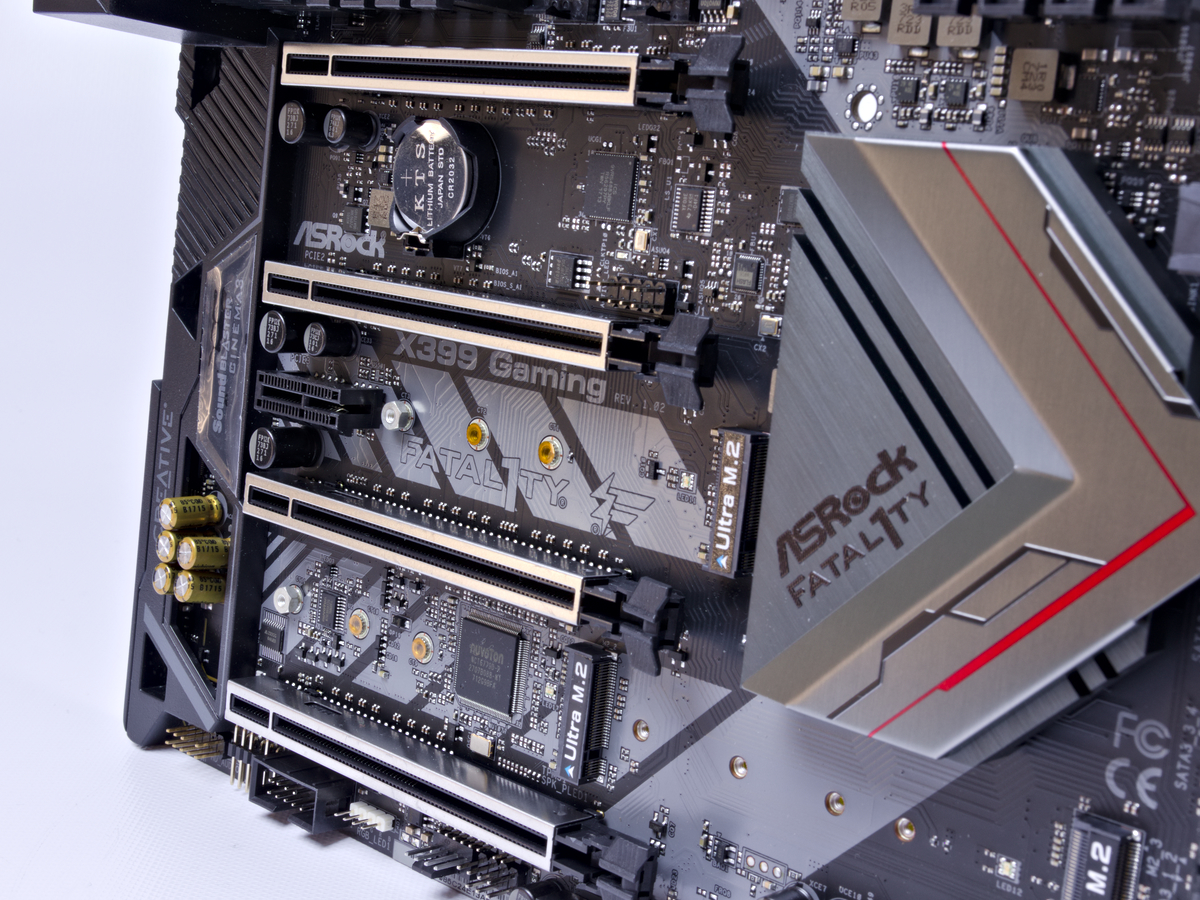
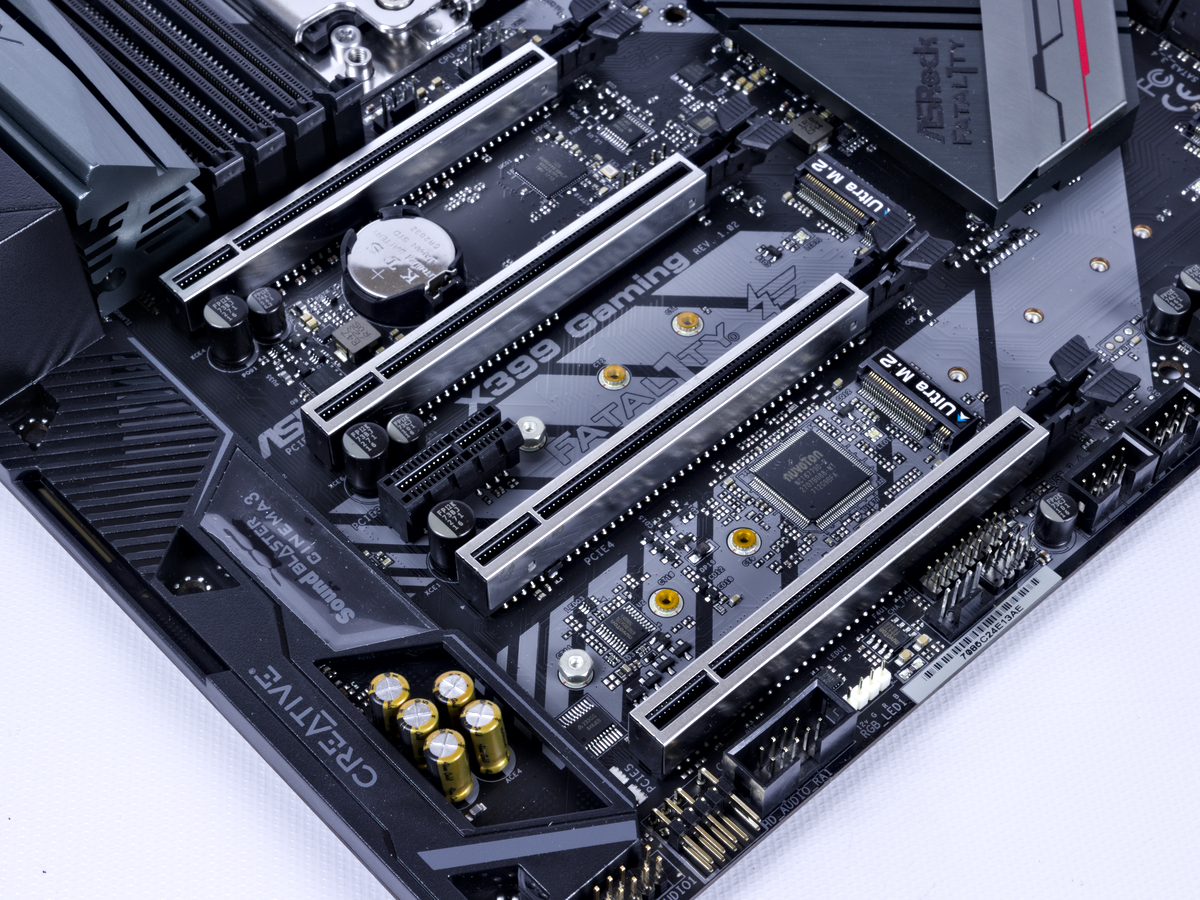
Copying the Taichi board layout, the PCIe topology is routed out to four x16 connectors and one open-ended x1 connector. From top to bottom, they are wired as x16/x8/x1/x16/x8, where the larger ports are Gen3 PCIe and the x1 is Gen2. With the Aquantia chip providing 10Gb connections, this system really can leverage multi-GPU configurations without sacrificing Ethernet connectivity or imparting storage controller complications.

Given the “Gaming” moniker, this Fatal1ty product is a stark deviation from the Taichi’s aesthetic, favoring angles, gradients, and heavy use of darker grays and blacks. The X399 chipset is illuminated by LEDs emitting from behind the heatsink, and there are two RGB headers that support LED strips. We feel that the accompanying IO shields and regulator heatsinks make the Professional Gaming board more attractive than the Taichi model. But ultimately, both boards provide similar looks when fully populated.

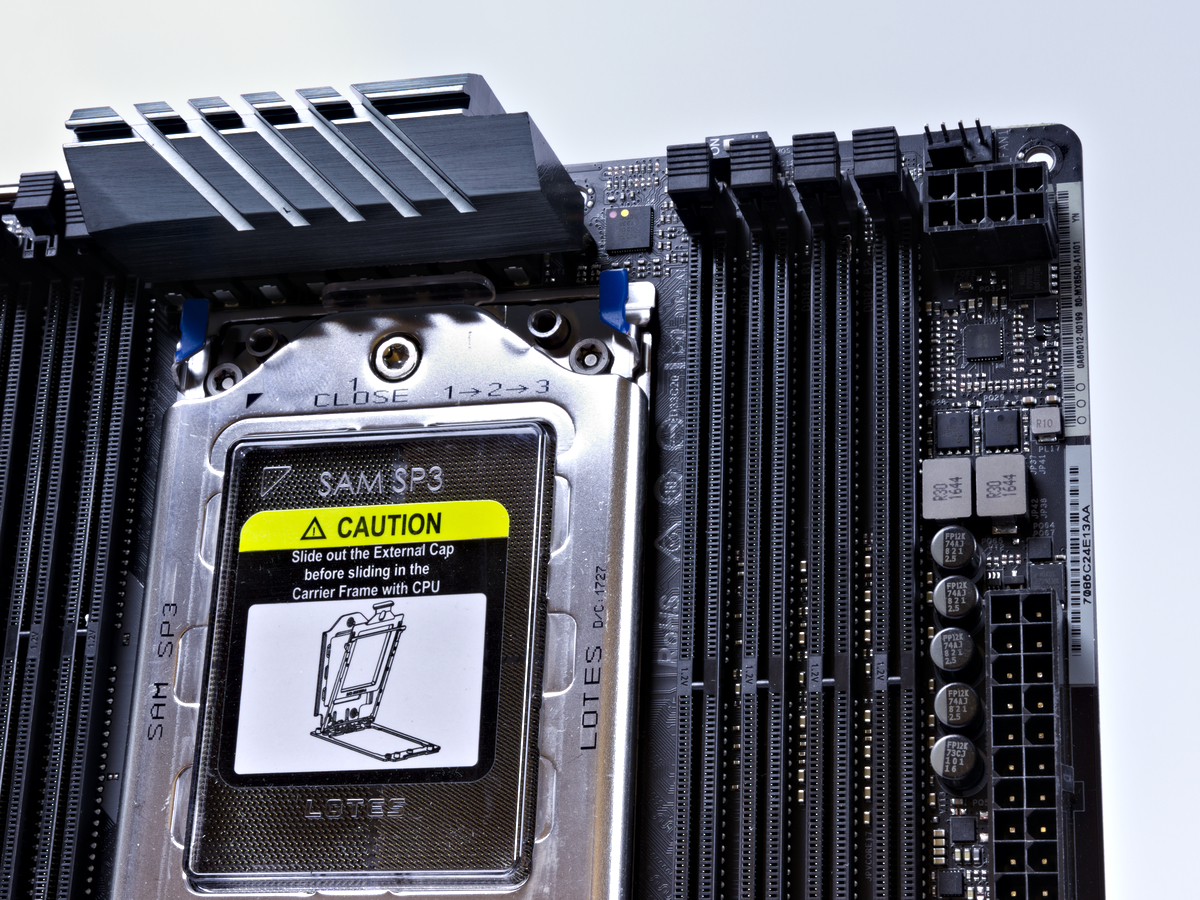
All things considered, the ASRock Fatal1ty X399 Professional Gaming builds on the Taichi’s success with features that favor the workstation more-so than the gamer. For a gaming board, we would favor more fan/pump headers for water cooling and possibly removing the U.2 and Wifi card to reduce frequently unused features. For a workstation, relocating the power headers and spreading out some of the other components might improve serviceability.
MORE: Best Motherboards
MORE: How To Choose A Motherboard
MORE: All Motherboard Content
-
redgarl "Tough value proposition for gamers"Reply
ARE YOU FRIGGING KIDDING ME? Aren't you the site that recommend the 9900k as a GAMING CPU with a 600$ motherboard? How is that value proposition for gamers by the way? Why not just saying that your money is better invested in a GPU than a CPU for games? Of course you didn't think it was important last Friday...
By the way, nothing about the review particularly, just the obvious double standard and lack of consistency throughout the site. -
Crashman Reply
You seem confused. Read the Z390 motherboard reviews.Then look at the byline. Then look at the byline here. The Terk is not the big-spending-gamer you're looking for. Motherboard reviewers prioritize motherboards, CPU reviewers prioritize CPUs.21420384 said:"Tough value proposition for gamers"
ARE YOU FRIGGING KIDDING ME? Aren't you the site that recommend the 9900k as a GAMING CPU with a 600$ motherboard? How is that value proposition for gamers by the way? Why not just saying that your money is better invested in a GPU than a CPU for games? Of course you didn't think it was important last Friday...
By the way, nothing about the review particularly, just the obvious double standard and lack of consistency throughout the site.
The Terk is seeing gaming situations where disabling some of the big AMD processor's cores boosts gaming performance. So maybe you're better off as a gamer to get a model with fewer cores.
Once you figure out that part, ask yourself a question: Is yours even an honest question? The 9900K review appears to offer up the 9700K as a more-realistic alternative. "The Core i7-9700K, even at stock settings, is competitive with the -9900K in most titles, especially considering the $115 you save by stepping down a notch." followed with the last sentence reading "but the (9900K's) $500 asking price relegates it to the most extreme performance enthusiasts."
-
TheTerk X399 is by no means a "value" platform, and the addition of 10Gb networking really is a tough pill to swallow. as a "gamer" would you rather get a cheaper, equivalent quality board or invest in a potentially better forward-looking network adapter. Hence "tough value proposition".Reply
Thanks for the feedback, hit me up on the community Discord if you wanna chat more about it. I'm on there a lot -
izzerwat The 'Gaming' suffix on this board is obviously silly and is best ignored. The whole TR platform is not a 'good value proposition for gamers' because gamers aren't the target audience.Reply
Its a workstation/home server/networked renderbox platform which is where the use-case value is at. For 32 cores of Zen goodness, 10gbit and decent...ish power delivery these boards and CPUs are actually remarkably cheap, compare for instance to a dual-socket, 2x16-core Intel setup.
AsRock's likely reason to stick 'gamer' on there is its associated with the Fatality brand, which they are apparently set on pairing with 10GBit controllers.
The gaming and windows benchmarks don't really agree with the 2990WX, this is known from previous reviews. Windows doesn't properly work with anything over 16-cores and ffs, don't buy a 32-core CPU for playing some vidja games.
That all said, I do think this board would have made more sense without the extraneous features. The wifi and gaming-ish features are kind of extraneous.